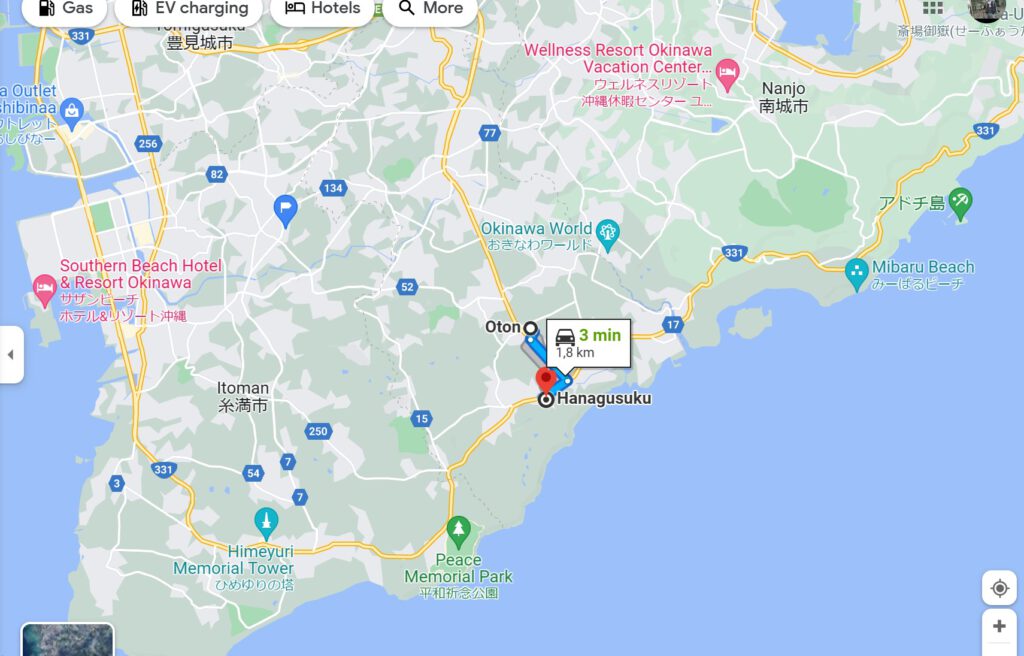The following info is found in literature:
Ufutun no Bō (aka Mēkata no Bō)
In today’s Yaese Town Ufutun (the former Gushichan Ufutun).
When and where performed: During Abushibarē in the 4th month of the old lunar calendar.
This bōjutsu is performed together with the music of the Kagiyade-fū.
History and overview of this village bōjutsu: Was there an influence by the Yadori?
It is called Mēkata no Bō and Ufutun no Bō.
Ufutun became an administrative district in 1931.
This bōjutsu was taught by the late Yagi Zenjo to Yagi Zenryō. In addition, there is Koshima Mizusei as a successor.
(See: Okinawa Prefecture Board of Education: Basic Research Report on Karatedō and Kobudō, 1994. Hokama Tetsuhiro: Okinawa Karate Kobudō no Shinzui, 1999.)
There is a lot of information in the short entry above.
First of all, this bōjutsu is called Ufutun no Bō and also Mēkata no Bō. Today Ufutun is located in Yaese Town, but in the past it belonged to Gushichan.
Next, what is Abushibarē? Abushibarē is an event that takes place on a lucky day in the 4th month of the old lunar calendar, mostly around the 14th and 15th day of the month. It is a ritual of exterminating harmful insects with the Noro priestesses at its center. In the past, harm by rats or insect pests were a threat for the agricultural communities, and magic considered the best means to chase them out of the village. Offerings to capture the insects were placed on a boat and pushed off the coast by the Noro priestess.
Next, it says that this bōjutsu is performed together with the music of the Kagiyade-fū. This Kagiyade-fū is one of the most famous Ryūkyūan music pieces and a famous song among karate people. Originally this song was only performed in front of the King.
Then, the entry raises the question whether the bōjutsu was influenced by Yadori, that is, by a rural “warrior class” villages. According to the website of Yaese Town, Ufutun (Ōton) has currently a population of only 275 persons in 111 households. The small village originated in Ufutunbara Yadori, which was created by former samurē (shizoku) persons who migrated from the urban district of Shuri to the territory of the current village. Like this, Yadori were rural “warrior class” villages and they often maintained parts of their previous urban culture, including martial arts. There are various reasons for the emergence of Yadori villages, one being that more and more people became aristocrats in Okinawa and by the 18th century there were not enough government posts left for all of them, so they were send to the rural areas where they established their own communities, the Yadori.
In 1931, Ufutun became established as a village section (aza, an administrative unit) separately from Hanagusuku village section, but the registered domicile and address remained Hanagusuku. In 1989, the area of Gushikami and Hanagusuku were changed, and Ufutun (Ōton) became a larger village section (administrative unit).
Well, the title of below video is “Bōjutsu ‘Mēkata’ Joint Dance Performance.” It was performed at the “All Island Bōjutsu Festival” held in Yaese in 2017. Obviously here members of various bōjutsu troupes from all over the island perform together.
First of all, this took place in Yaese District, and Ufutun (Ōton) is a village of this district. Second, the performance is referred to as bōjutsu mēkata. Third, it is performed to the music of Kagiyade-fū.
One man wears a jacket with the district name of “Hanagusuku” on it. Hanagusuku and Ufutun (Ōton) are close, only about 1.8 km apart, and they are also historically close, with Ufutun (Ōton) having been a part of Hanagusuku. It is therefore quite possible that the bōjutsu shown by the person with the name “Hanagusuku” on his jacket is similar in appearance to Ufutun Bō. It should be noted that no village bōjutsu is mentioned for Hanagusuku so it might have been handed down or adopted from elsewhere, including from Ufutun (Ōton) village.
I hope in the future we will be able to see the actual Ufutun Bō from Ufutun (Ōton) village, and see if there is any resemblance to either the 1961 perfomance of Shiroma Taisei (known to a few people from an unpublished video) or to the completely different Ufutun Bō that was adopted into Matayoshi kobudō circles.
© 2022, Andreas Quast. All rights reserved.

